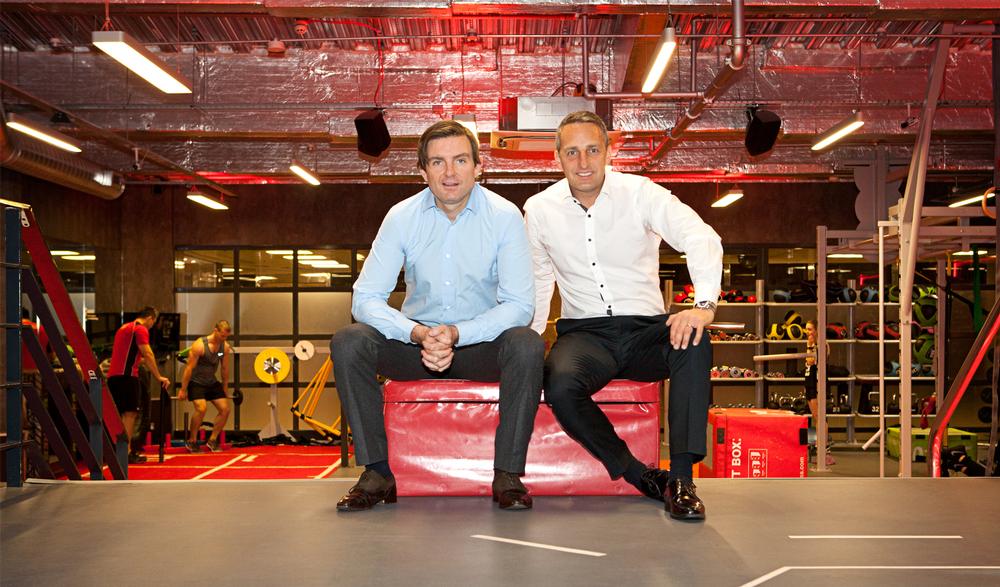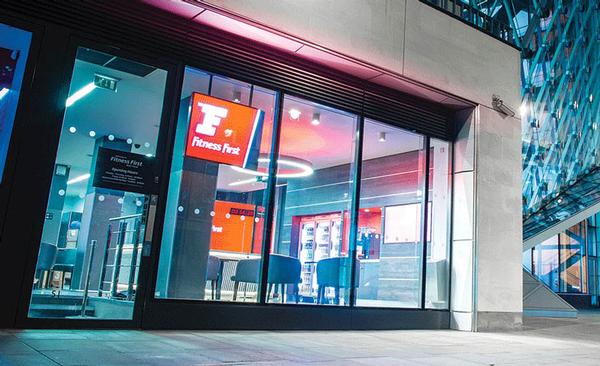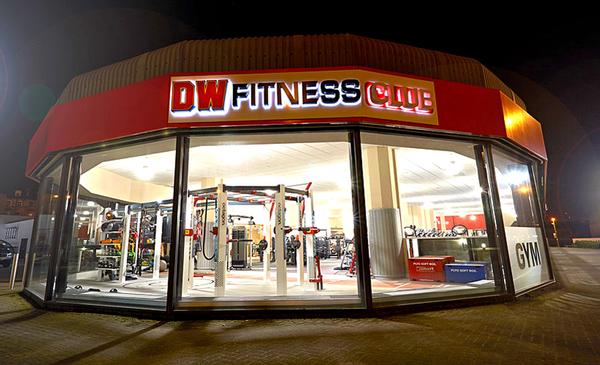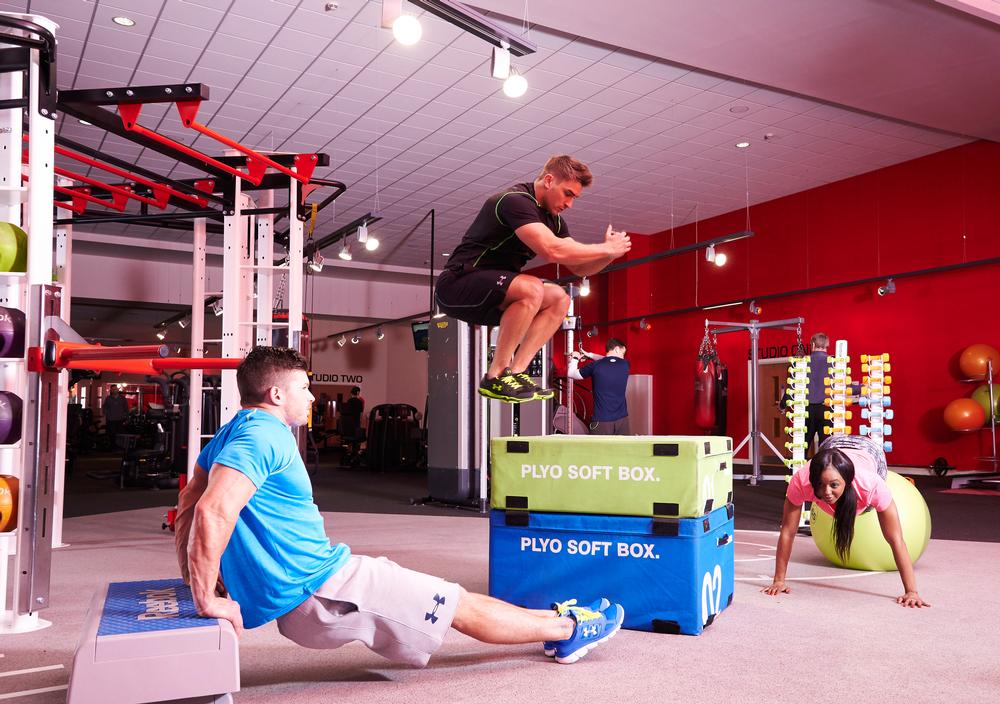When one health club chain is acquired by another, you might expect some sort of resentment in the party being acquired, especially when that party used to be the world’s largest fitness operator. But Scott Best and Martin Seibold – respectively managing director of DW Sports and managing director of Fitness First UK – seem to be on great terms when we meet to discuss DW’s acquisition of Fitness First UK, laughing and chatting like old friends.
“We’re just dating at the moment,” jokes Seibold. “It will take six to nine months for all the pieces fall into place. But we have a combination of two brands that are really going places, and that’s very exciting.”
“The more time we spend together, the more we think about how we can change things for the better – what DW does well that Fitness First can incorporate and vice versa,” adds Best. “It certainly won’t be a case of DW just jumping in and dictating how things are done.”
Focus on the winners
The acquisition of Fitness First shot DW almost overnight into a position as one of the UK’s largest health club chains. But the business had already been growing, with Best a long-time member of the team. “I was already in business with Dave Whelan when he sold JJB,” he explains, “and I was still there when he bought the business back in March 2009. At that point, there were 53 health clubs and 51 retail stores. We organically grew the business to 71 clubs, and then we bought seven of the former LA fitness clubs from Pure Gym in November 2015 to take us to a total of 78.”
However, in the last few years and until the Fitness First deal, the focus for growth at DW was firmly on retail, as Best explains: “Retail felt it had found a winning formula. It joined Intersport in 2012, which boosted its buying power, and in the last two years we’ve opened 18 retail stores. Meanwhile, our Bristol health club opening in December 2016 was our first in nearly three years.”
But the Fitness First acquisition has switched the focus of the business back to fitness. Confirmed at the end of September 2016, the deal saw a further 62 clubs added to the DW-owned estate – although the group ultimately held on to only 45 of those sites. Three clubs have been closed since the acquisition, with the remainder sold to GLL (nine clubs), low-cost operator the Gym Group (four clubs) and a hotel in Jersey owned by Whelan’s portfolio of businesses (one club).
“Bristol we had to close, because DW was about to open its second club there – a great club with a pool,” says Seibold. “But the other clubs we sold or closed… we’d have done that anyway. We’d already reduced the Fitness First portfolio from 185 clubs to 62 – and now we’ve reduced it to 48. In the end, nobody has the money to give every club love. You have to focus on the ones that are winning.”
And the winning formula for Fitness First is focused firmly on central London, as Seibold explains: “The brand we’ve now built in London is very successful. Four years ago, you probably would have expected our clubs to be rebranded as DW after this acquisition, but with what we’ve created in the last few years – the transformation of our clubs, our staff, our philosophy – we’d be crazy to do that.
“We aren’t as successful out of London though, and that’s because – in contrast to DW – we’re highly under-invested outside of the capital. So the question now is: how far does London stretch? What about clubs in commuter towns, where residents travel to London for work and use our clubs near their offices – should they still be Fitness First?
“The availability of ‘home’ and ‘work’ clubs is key in London: in total, 43 per cent of our members use multiple clubs. Similarly with the commuter towns, some of them see around a fifth of members travelling into London and using our clubs there too.
“So we need to have a good look at what we’re going to do with the 10 or so clubs we still own outside of the capital.”
Two brands, one business
What seems to be emerging is that Fitness First and DW Fitness will continue as separate entities, with Fitness First focusing exclusively on London and DW taking on – and rebranding – any clubs deemed ‘non-London’.
“Fitness First in London is an awesome brand – it would take DW 10 years to get to that level,” says Best. “We wanted to have a London presence for our business – that’s why we bought Fitness First – but we’re happy to run two separate businesses at the front end and play to the individual brands’ strengths. Then, behind the scenes, Martin and I will work together to see where we can build synergies.”
There is, say both men, no hurry – late 2017 is touted as a possible completion date for the rebranding project. It will simply, as Seibold explains, be a case of “using the two brands cleverly to match the demographics” – there will be no overlap of estates, no direct competition between the two brands.
But there will be some investment in both sides of the estate. While Best prefers not to say what DW paid for Fitness First, it was, confirms Seibold, “a really good purchase – which means there’s still cash there to do something with the business”.
Swimming pools will be added to a number of Fitness First clubs – but not all. “One of the things we discussed in probably our first ever conversation was the notion of ‘cluster clubs’,” says Best. “The Fitness First team explained how, in London, not every club needs a swimming pool. In any one area, you can have three or four dry clubs and one wet club, and you sell memberships that give access to the whole cluster of clubs.
“It was a lightbulb moment for me, because when we bought the old LA fitness club in the Waldorf hotel in 2015, we had no experience of London. We had no idea you really couldn’t own only one club in the capital, because people expect access to a number of clubs. We lost 17 per cent of the members on day one.”
DW has, however, enjoyed far greater success outside of London, with a model that plays to local demographics and lifestyle. “I visit a lot of DW sites, and what I’m really impressed with is the community feel,” says Seibold. “It’s something we don’t have in London. There are big lounge areas, and if you go in around 4.00pm – the sort of time our Fitness First clubs are dead – the DW clubs are full of mums and kids. There’s so much space for all sorts of different activities and classes, so much for the kids to do.”
Best adds: “A few years ago, when the budget operators came along and started opening clubs, operators like us – and I will hold my hands up to this – got side-tracked into believing that was the way forward. We now acknowledge that we went too deep in terms of trying to compete on price, and it negatively impacted our customer service.
“After a while we realised that wasn’t the way forward for us. We realised, if we wanted to set ourselves apart from the budget operators, we needed to get our sense of community back. That’s something we’re working very hard on now.”
New opportunities
DW is also refining the offering in terms of facilities at its clubs, with the newest location in Bristol – opened last month – the first of a new model that introduces elements such as functional zones, dedicated mind-body areas and cycling studios on the gym floor alongside the existing offering of gym, group exercise, swimming pool and wet area.
There will also be a new look and feel for the brand launching this month, with a total of 54 refurbishments taking place across the DW estate over the next three years.
And both men are keen to explore other new ways to push the agenda forward too. “With the DW retail arm, we have a real opportunity to know the customer from end to end, encompassing training apparel and nutrition as well as fitness,” says Best. “The likes of Nike and Adidas are very excited by the 120,000 members in London. There are huge opportunities for e-commerce – promoting yoga apparel to those booking yoga classes and so on.”
“Digital is another opportunity. It’s here already and you have to embrace it,” adds Seibold. “If you look at BasicFit in Europe – which floated on the stock market in June 2016, with a value of €1bn – it can live stream classes from all its clubs. We have the technology to do that at Fitness First too – one of the studios at our club in Bishopsgate is a recording studio for group exercise, so we can record or stream the classes.
“This is the sort of thing you have to be looking at as an operator. Bricks and mortar is fine, but you have to address the customer 24/7. You have to meet their needs outside of the club as well as inside it.”
Growth on the cards
But in spite of the focus beyond bricks and mortar, growth of the club estate remains firmly on the cards. “There’s so much opportunity to grow in London that, over time, we may look at opening as many Fitness Firsts as we open DW clubs,” says Best.
“We’re very versatile – anything from 750sq m to 1,500sq m can work for us – and there’s huge potential for growth,” adds Seibold. “There are currently 20 Fitness First clubs in the City of London [the financial district of the city] and we could easily take that to 50 clubs, whether through acquisition or slower growth. We’re in no hurry, but the opportunity is definitely there.”
“The good thing about Fitness First is you really don’t need every element of the total offering in every club,” continues Best. “Because the clubs are so close – you’ll walk past two or three on your journey to work – you can have different offerings in different clubs, and members can use different clubs on different days depending on what workout they want to do that day.”
And there are plenty of options, as Seibold explains: “We now have 12 signature training concepts, from our ‘freestyle’ functional training to an athletics-based workout, and from hot yoga to boxing to mind-body. So we can look at all of our clubs – and going forward maybe also the DW clubs – to see where there’s space for an additional offering, and what might work in each location.”
“These might be dedicated spaces, but they won’t be boutiques charging an additional fee,” observes Best. “Existing members will always have everything included in their membership package – people simply don’t expect to pay extra for classes offered within their club.”
And in fact neither Seibold nor Best are worried about the competition from London’s growing boutique segment. Seibold explains: “In the locations where our clubs are near a boutique, what we’re actually noticing is a growing demand in our clubs for whatever discipline is offered at the boutique. We’ve had to build bigger cycling studios in the clubs located near cycling boutiques, for example. People start off going to the boutiques for the ‘tribe’ and all that sort of thing, but over time they come to us, because they can get not only cycling but also everything else at our clubs.”
Being ‘the best’
So looking forward, what are Best and Seibold’s ambitions for the combined DW / Fitness First business?
“Although we now have significant national coverage, our ambition isn’t to be the biggest operator. We won’t win that race and we don’t want to,” says Seibold. Best nods and adds: “We want to be the best fitness operator. I believe that’s achievable.”
“But the question is, what does ‘best’ mean?” Seibold continues. “And our definition is quite simply this: we want to be people’s partner in fitness.”
He continues: “One of the things I’m proudest about at Fitness First over the last few years is that we’ve increased the proportion of members who actually use their membership by about 10 per cent. Our focus is on understanding member motivation and harnessing this to ensure they train at our clubs on a regular basis.
“I saw a documentary on NASA and they were asking all the staff what it was they did. They asked the cleaner, and he said his job was to get people to the moon. Everyone at NASA felt they were contributing to that same end goal. So I took that to Fitness First and told all the staff: ‘If anyone ever asks you why you work for Fitness First, tell them your job is to motivate members to train’.
“We’re never going to be the coolest, or the biggest, and we don’t want to be. We want to be the ones who make people work out. How you do that depends on the market – the customers in each location are different – and that’s exciting, because we can now cater for that.”




























































